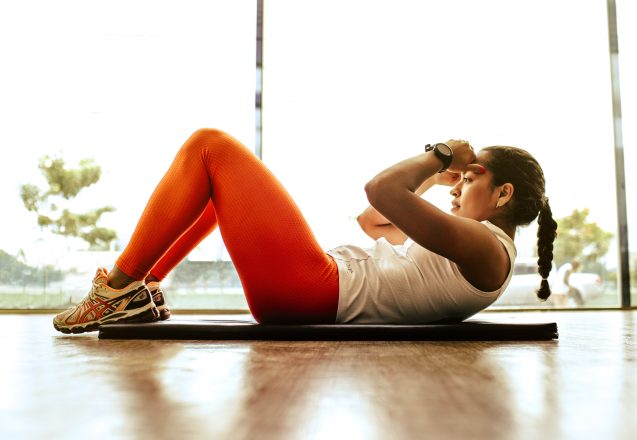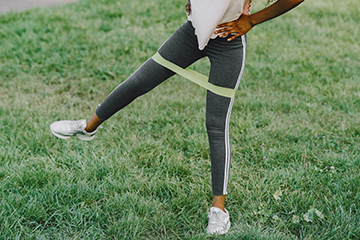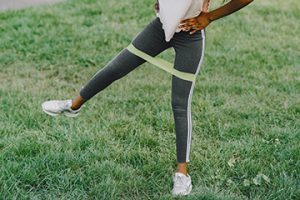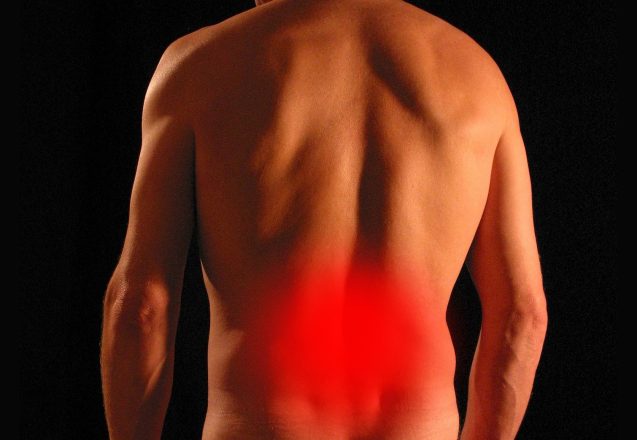Pelvic Floor Exercises For Women
 If your pelvic floor muscles aren’t strong enough, you’ll have problems with bladder and bowel continence. The pelvic floor can affect women’s sexual sensation since it supports the uterus. Weakness can even cause back pain. Pelvic floor exercises strengthen the muscles. The stronger those muscles are, the less fear you have that you’ll wet your pants if you sneeze or laugh. That’s especially true for pregnant or older women.
If your pelvic floor muscles aren’t strong enough, you’ll have problems with bladder and bowel continence. The pelvic floor can affect women’s sexual sensation since it supports the uterus. Weakness can even cause back pain. Pelvic floor exercises strengthen the muscles. The stronger those muscles are, the less fear you have that you’ll wet your pants if you sneeze or laugh. That’s especially true for pregnant or older women.
What are the pelvic floor muscles, and how can you strengthen them?
As the name implies, these core muscles are on the floor of the pelvis. They support the bladder, bowel, uterus, and core. They also regulate abdominal pressure. You can start with a simple exercise done on the toilet when you urinate. Focus on the muscles you’re using to allow the urine to release before you go. Attempt to stop your urine by tightening those muscles before you start urinating. A kegel exercise is done the same way but not while urinating. Instead of stopping a urine stream, tighten and relax the muscles you use to do that. You can do it anywhere.
Do a bridge and then squeeze.
A bridge starts by lying on your back with your knees bent with your feet flat on the floor. As you exhale, pull your belly in as tight as you can and squeeze your bottom tightly, lifting your body to a straight angle from your knees to the top of your head. Hold, then slowly lower your body as you inhale. To improve the pelvic floor workout, hold a ball or pillow between your knees.
A clamshell helps build the core muscles.
The clamshell is a simple exercise that starts by laying on your side with your upper body lifted and supported on the forearm of your lower arm. Bend your knees at a 45-degree angle, putting your upper arm on the floor for stability. Keeping your heels together, lift your upper leg like a clamshell opening. Hold and then lower the leg back to the starting position. Do ten, then switch sides.
- Do a side-style leg left. Lay on your side with the bottom leg bent and the top one straight. Lift the upper leg while you tighten the pelvic floor muscles. Slowly lower the leg and repeat. Switch sides.
- Doing a shallower squat with feet closer together can help strengthen the pelvic muscles. Keep your back straight and lean slightly forward while you bend your knees and lower toward the ground. When returning to the standing position, focus on tightening the pelvic muscles.
- Pelvic floor exercises can help stop the stomach from pouching. If the pelvic floor is weak, it causes your organs to droop and push out the stomach.
- Just like any exercise, focus on form and technique. It’s even more important for pelvic floor exercises and the reason most people need to locate where they are before starting.
For more information, contact us today at Reggie C. Fitness



 In Houston, TX, clients log their workouts for many reasons. The most obvious reason to log your workouts is to check your progress and find out what’s working and what’s not. It shouldn’t take much time, especially if you only log the exercise and the number of reps. Some people like adding extra information, such as whether doing it was easy or extremely difficult. That gives more clues to the fitness level at which they perform. If the exercise feels easy, increase the number of sets or repetitions you perform to make it harder.
In Houston, TX, clients log their workouts for many reasons. The most obvious reason to log your workouts is to check your progress and find out what’s working and what’s not. It shouldn’t take much time, especially if you only log the exercise and the number of reps. Some people like adding extra information, such as whether doing it was easy or extremely difficult. That gives more clues to the fitness level at which they perform. If the exercise feels easy, increase the number of sets or repetitions you perform to make it harder.
 Everyone should have the opportunity to learn how to get fit and the ability to follow the advice. Many people don’t have access to a gym or a personal trainer. It might be too expensive, not close to their home, or not open when they have time. Those are all reasons people have turned to online help and why I provide it. I believe everyone deserves to look and feel their best. If you’re a busy mom, a person whose hours conflict with gym hours, or on a budget but crave feeling good, an online option may be right for you.
Everyone should have the opportunity to learn how to get fit and the ability to follow the advice. Many people don’t have access to a gym or a personal trainer. It might be too expensive, not close to their home, or not open when they have time. Those are all reasons people have turned to online help and why I provide it. I believe everyone deserves to look and feel their best. If you’re a busy mom, a person whose hours conflict with gym hours, or on a budget but crave feeling good, an online option may be right for you.
 If you live in Houston, TX, and want to improve your potential for success or give yourself a special treat for a job well done, new fitness products can do both. Some are low-cost items yet improve fitness results for the average person without breaking the budget. Others are special clothing that helps improve results and boost the success you hope to achieve. Many of the items don’t cost much but provide a huge benefit.
If you live in Houston, TX, and want to improve your potential for success or give yourself a special treat for a job well done, new fitness products can do both. Some are low-cost items yet improve fitness results for the average person without breaking the budget. Others are special clothing that helps improve results and boost the success you hope to achieve. Many of the items don’t cost much but provide a huge benefit.
 It’s already warm and expected to get warmer. You know what that means! It’s time to make sure you’re swimsuit ready. If you haven’t even started, there’s still time to improve significantly in how you look in your bathing suit. It’s never too late to get ready for swimsuit season. Create a weight loss goal and then start exercising to shed those extra pounds and tone the muscles to get a trimmer, slimmer appearance. You may not reach your ultimate fitness goal, but there’s no better time to start than now. You’ll get the benefit of most of the summer to enjoy fun in the sun with your new appearance.
It’s already warm and expected to get warmer. You know what that means! It’s time to make sure you’re swimsuit ready. If you haven’t even started, there’s still time to improve significantly in how you look in your bathing suit. It’s never too late to get ready for swimsuit season. Create a weight loss goal and then start exercising to shed those extra pounds and tone the muscles to get a trimmer, slimmer appearance. You may not reach your ultimate fitness goal, but there’s no better time to start than now. You’ll get the benefit of most of the summer to enjoy fun in the sun with your new appearance.
 If you live in Houston, TX, you may have heard of the Active Release Technique (ART). It’s a way to relieve pain. Chiropractors, massage therapists, doctors, and physical therapists provide the services. It has been shown to help relieve pain and improve mobility. It helps by finding knots in muscles and fascia and using pressure to release them. It can aid nerves, tendons, fascia, and muscles to move pain-free.
If you live in Houston, TX, you may have heard of the Active Release Technique (ART). It’s a way to relieve pain. Chiropractors, massage therapists, doctors, and physical therapists provide the services. It has been shown to help relieve pain and improve mobility. It helps by finding knots in muscles and fascia and using pressure to release them. It can aid nerves, tendons, fascia, and muscles to move pain-free.
 One of the reasons I love working with people in Houston, TX, is that they’re tough and keep pushing until they accomplish their goals. It can be extremely difficult, especially if you’re plateauing. You may be dutifully hitting the gym or sticking closely to online workouts and not experiencing any weight loss. It may be because you’re plateauing. That occurs for many reasons. It doesn’t mean you can’t get past it. You can beat a plateau by making a few changes.
One of the reasons I love working with people in Houston, TX, is that they’re tough and keep pushing until they accomplish their goals. It can be extremely difficult, especially if you’re plateauing. You may be dutifully hitting the gym or sticking closely to online workouts and not experiencing any weight loss. It may be because you’re plateauing. That occurs for many reasons. It doesn’t mean you can’t get past it. You can beat a plateau by making a few changes.
 Getting more done in the same allotted time is part of many goals, even fitness goals. You can become more productive by making some changes in your workout. One example is using HIIT—high intensity interval training. It’s not an exercise but a way of doing any exercise. You alternate intensity throughout the workout, going from peak intensity and then back to a recovery pace, then back to peak intensity again. You need 150 to 300 minutes of moderate exercise weekly but only 75 to 150 minutes of intense workouts. You can’t maintain a high intensity for long. Alternating intensity allows you to do that.
Getting more done in the same allotted time is part of many goals, even fitness goals. You can become more productive by making some changes in your workout. One example is using HIIT—high intensity interval training. It’s not an exercise but a way of doing any exercise. You alternate intensity throughout the workout, going from peak intensity and then back to a recovery pace, then back to peak intensity again. You need 150 to 300 minutes of moderate exercise weekly but only 75 to 150 minutes of intense workouts. You can’t maintain a high intensity for long. Alternating intensity allows you to do that.
 Everyone should include stretching in their workouts. In Houston, TX, we incorporate stretching into the workouts to help people stay flexible. Staying flexible is vital to staying fit. It protects the muscles from injury when doing everyday tasks. Stretching helps increase the range of motion, allowing easier movement. It reduces the pain caused by tight muscles. It improves posture and balance, helps boost strength-building, and improves overall performance.
Everyone should include stretching in their workouts. In Houston, TX, we incorporate stretching into the workouts to help people stay flexible. Staying flexible is vital to staying fit. It protects the muscles from injury when doing everyday tasks. Stretching helps increase the range of motion, allowing easier movement. It reduces the pain caused by tight muscles. It improves posture and balance, helps boost strength-building, and improves overall performance.
 It’s the perfect time to get in shape. There are still several months before summer is here. That gives you three to four months to get your body swimsuit ready. It doesn’t matter where you start, whether you’ve never exercised, are overweight, or just have to tone your muscles to look your best, starting now is all that’s important. You may not reach your ultimate goal, but you can make huge strides toward it. In the four to five months until mid-summer, you can lose 40-50 pounds, tone and tighten your muscles, and develop a healthy sexier appearance.
It’s the perfect time to get in shape. There are still several months before summer is here. That gives you three to four months to get your body swimsuit ready. It doesn’t matter where you start, whether you’ve never exercised, are overweight, or just have to tone your muscles to look your best, starting now is all that’s important. You may not reach your ultimate goal, but you can make huge strides toward it. In the four to five months until mid-summer, you can lose 40-50 pounds, tone and tighten your muscles, and develop a healthy sexier appearance.